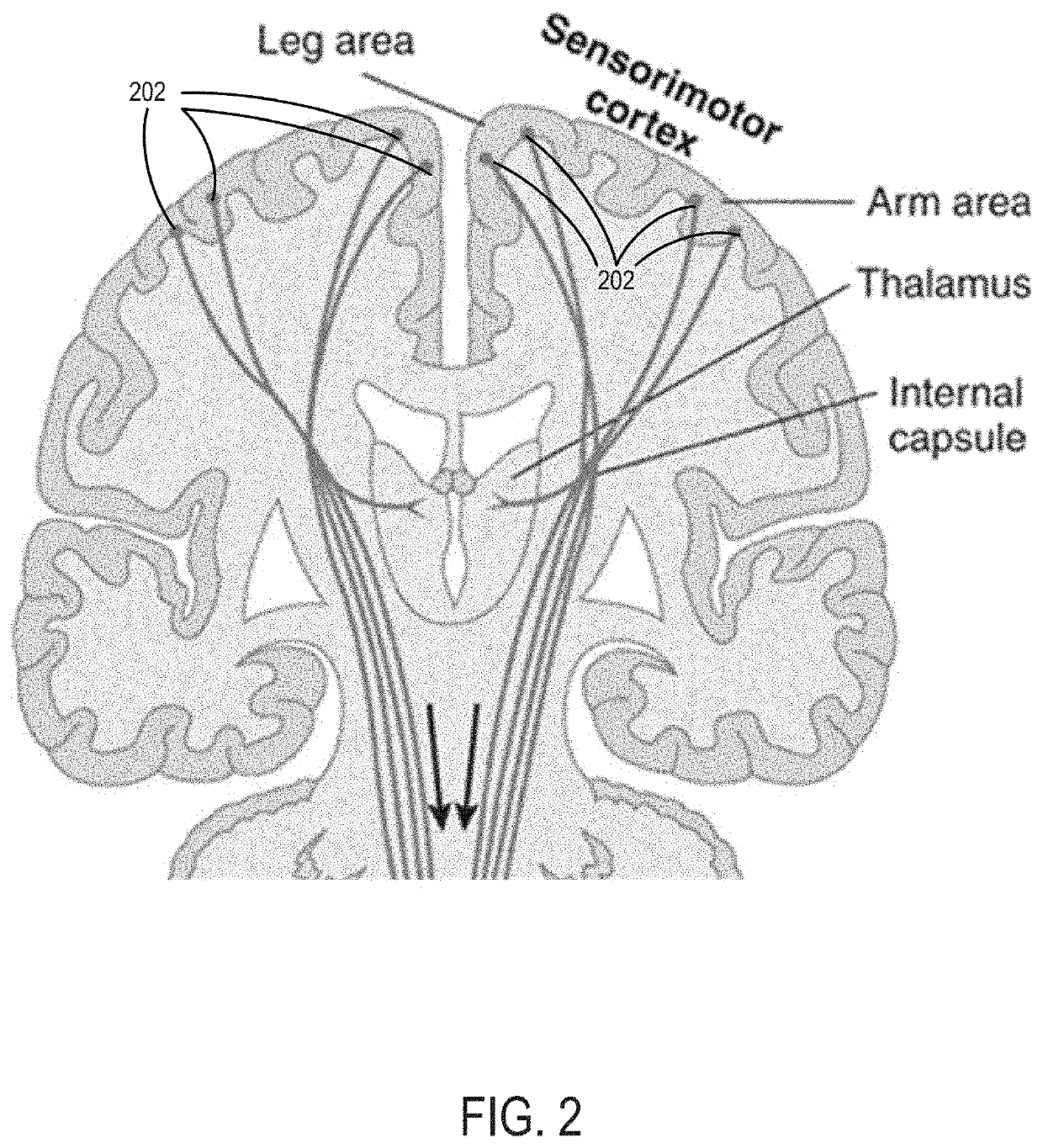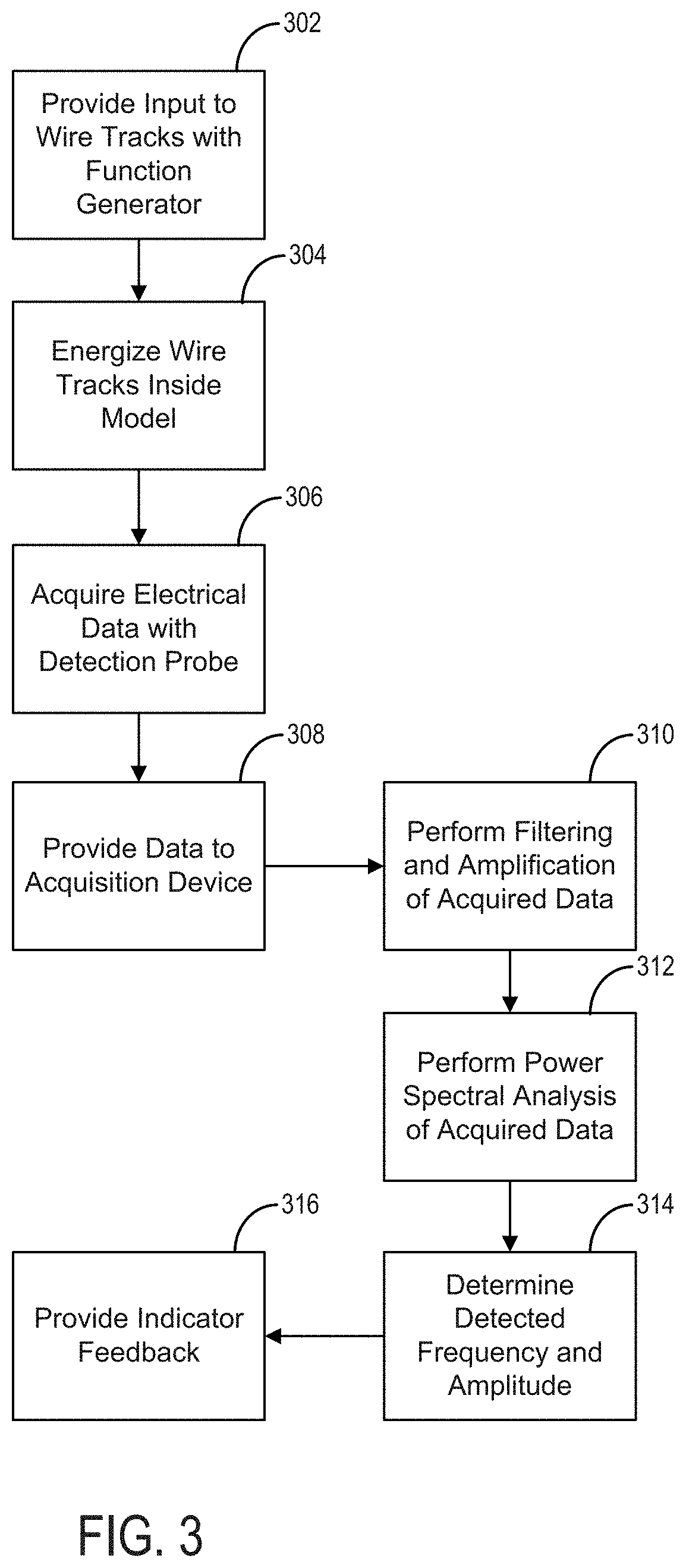Systems and Methods for a Simulator for Brain Mapping
a brain mapping and simulator technology, applied in the field of surgical simulation and training models, can solve the problems of implying ethical and religious concerns, affecting the accuracy of brain mapping, and costing up to usd $2,500.00
- Summary
- Abstract
- Description
- Claims
- Application Information
AI Technical Summary
Benefits of technology
Problems solved by technology
Method used
Image
Examples
Embodiment Construction
[0037]Systems and methods are provided for a functional model of the brain to be used for training medical professionals, such as to resect brain tumors outside of the operating room. In some configurations, the model incorporates electrical feedback. Electrical feedback, or cortical mapping, is a component of all awake brain tumor resection surgeries and conventionally is only taught by observation. Many neurosurgical residents say that they learn this skill on the job, meaning that the most useful experience and knowledge that they gain about the surgical procedure happens live in the operating room with a patient relying on them to resect a tumor without leaving permanent deficiencies. This is not ideal, and having models that incorporate more aspects of a live surgery can aid in the prevention of this problem. These models may be used to change the way tumor resection techniques are taught to residents and allow them to train more safely and successfully.
[0038]Simulators have pr...
PUM
 Login to View More
Login to View More Abstract
Description
Claims
Application Information
 Login to View More
Login to View More - R&D
- Intellectual Property
- Life Sciences
- Materials
- Tech Scout
- Unparalleled Data Quality
- Higher Quality Content
- 60% Fewer Hallucinations
Browse by: Latest US Patents, China's latest patents, Technical Efficacy Thesaurus, Application Domain, Technology Topic, Popular Technical Reports.
© 2025 PatSnap. All rights reserved.Legal|Privacy policy|Modern Slavery Act Transparency Statement|Sitemap|About US| Contact US: help@patsnap.com



